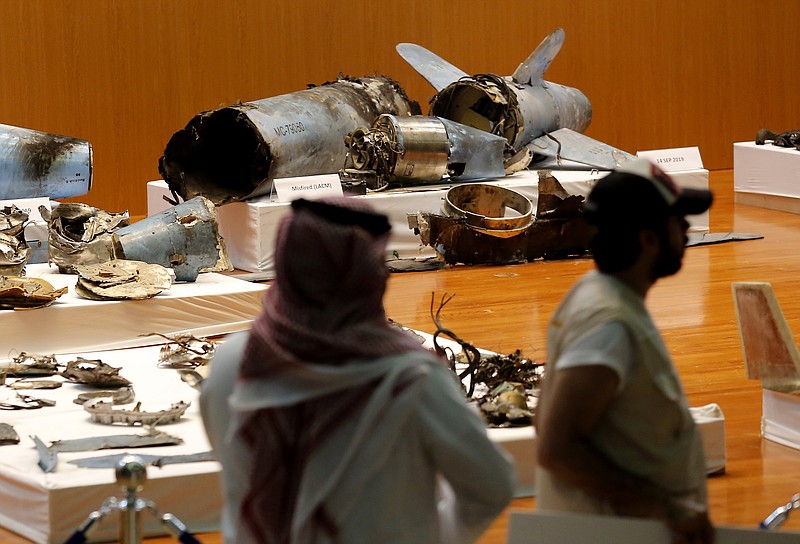RIYADH, Saudi Arabia (AP) — U.S. Secretary of State Mike Pompeo on Wednesday called the attack on Saudi Arabia’s oil installations an “act of war” against the kingdom by Iran, as the Saudis displayed missile and drone wreckage and cited other evidence they said shows the raid was “unquestionably sponsored by Iran.”
Iran, which has denied involvement in the attack, warned the U.S. it will retaliate immediately if it is targeted.
President Donald Trump, meanwhile, said he is moving to increase financial sanctions on Tehran over the attack.
At a news conference, Saudi military spokesman Col. Turki al-Malki said the attack Saturday that did heavy damage to the heart of the Saudi oil industry was “launched from the north and was unquestionably sponsored by Iran.” Yemen lies to the south of Saudi Arabia, Iran and Iraq to the north.
Al-Malki stopped short of accusing Iran of actually firing the weapons itself or launching them from Iranian territory.
Yemen’s Iranian-backed Houthi rebels have claimed responsibility for the attack, saying it was in response to the yearslong Saudi-led war in Yemen that has killed tens of thousands of people.
At the news conference, the Saudis displayed broken and burned drones and pieces of a cruise missile Al-Malki identified as Iranian weapons collected after the attack. He also played surveillance video he said showed a drone coming in from the north.
Eighteen drones and seven cruise missiles were launched in the assault, Al-Malki said, with three missiles failing to make their targets. He said the cruise missiles had a range of 435 miles, meaning they could not have been fired from inside Yemen.
“This is the kind of weapon the Iranian regime and the Iranian IRGC are using against the civilian object and facilities infrastructure,” Al-Malki said, using an acronym for Iran’s Revolutionary Guard. He added: “This attack did not originate from Yemen, despite Iran’s best effort to make it appear so.”
Pompeo, who landed in Saudi Arabia shortly after the news conference, took a harder line, telling reporters: “The Saudis were the nation that was attacked. It was on their soil. It was an act of war against them directly.”
He said en route to Saudi Arabia that “it doesn’t matter” whether the Houthis claim they were behind the attack. “This was an Iranian attack,” he said.
“It doesn’t change the fingerprints of the ayatollah as having put at risk the global energy supply,” Pompeo said, referring to Iran’s Supreme Leader Ayatollah Ali Khomenei.
The attack came after a summer of heightened tensions between Iran and the U.S. over Trump’s withdrawal from the 2015 Iranian nuclear deal.
Iran sent a note to the U.S. via Swiss diplomats in Tehran on Monday, reiterating that Tehran denies involvement in the aerial attack, the country’s state-run IRNA news agency reported. The Swiss have looked after American interests in Tehran for decades.
“If any action takes place against Iran, the action will be faced by Iran’s answer immediately,” IRNA quoted the note as saying. It added that Iran’s response wouldn’t be limited to the source of the threat, suggesting it would inflict damage beyond what it had suffered.
The U.S. State Department had no comment on the Iranian warning.
Trump separately tweeted Wednesday: “I have just instructed the Secretary of the Treasury to substantially increase Sanctions on the country of Iran!”

